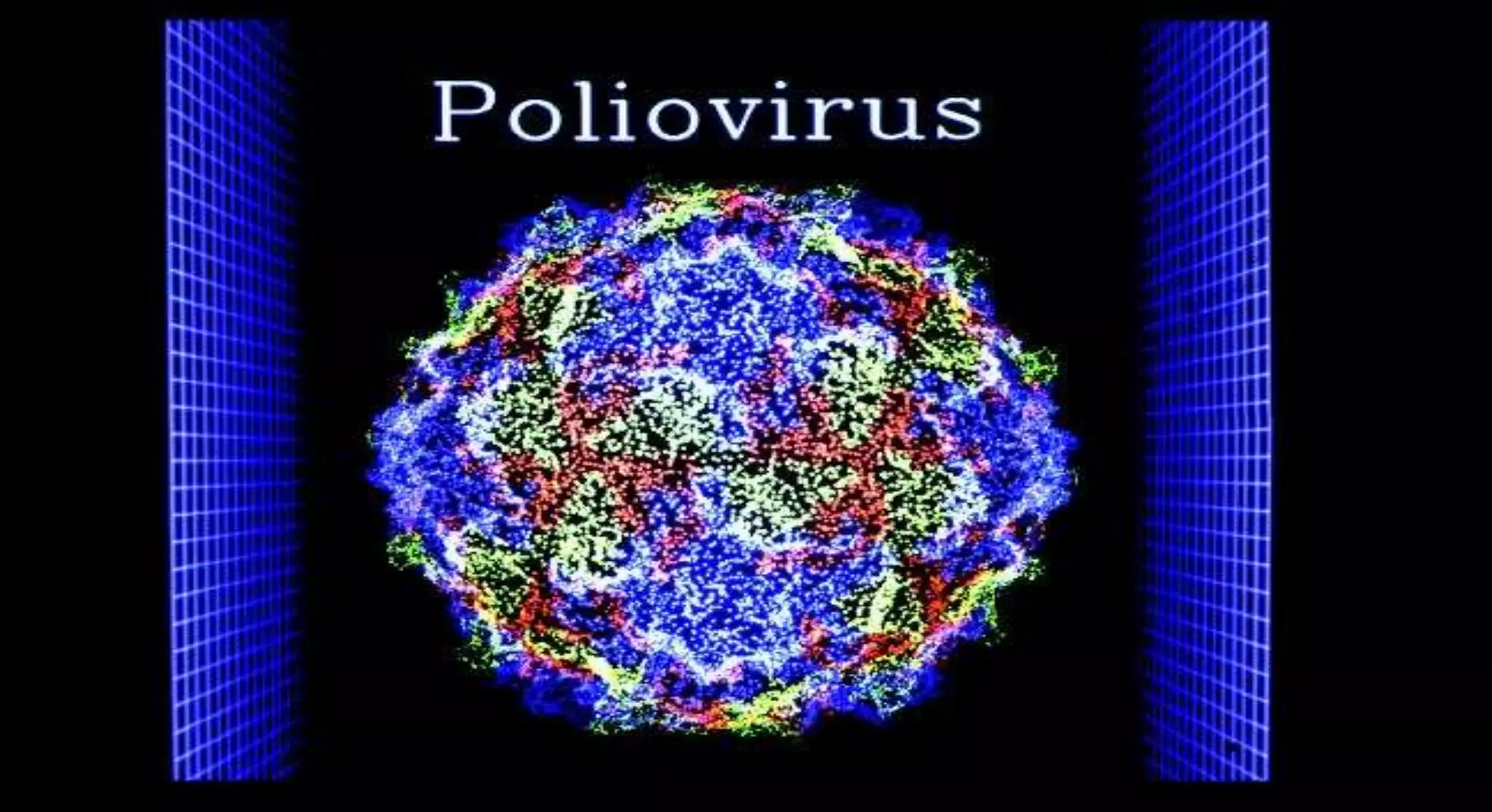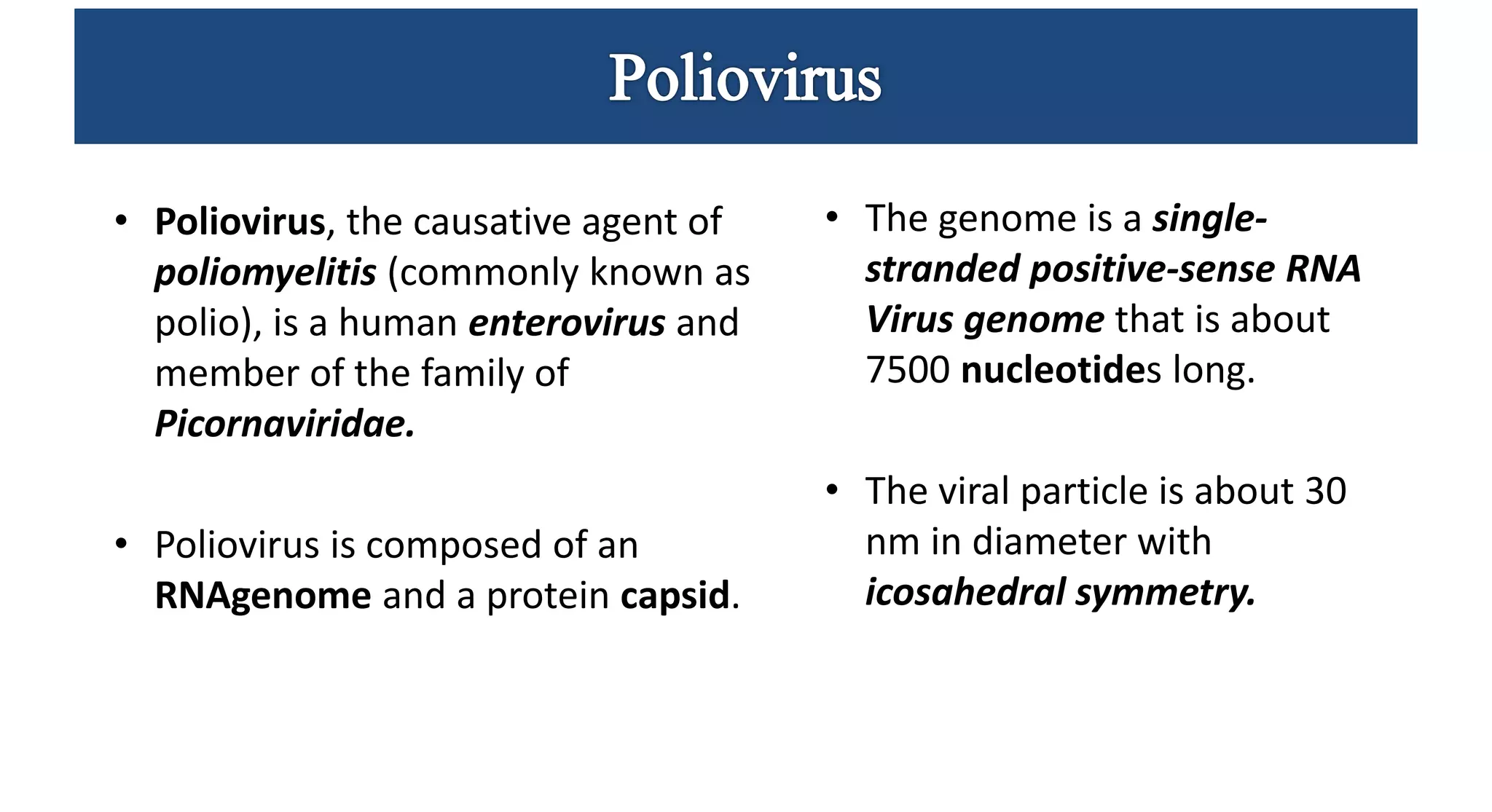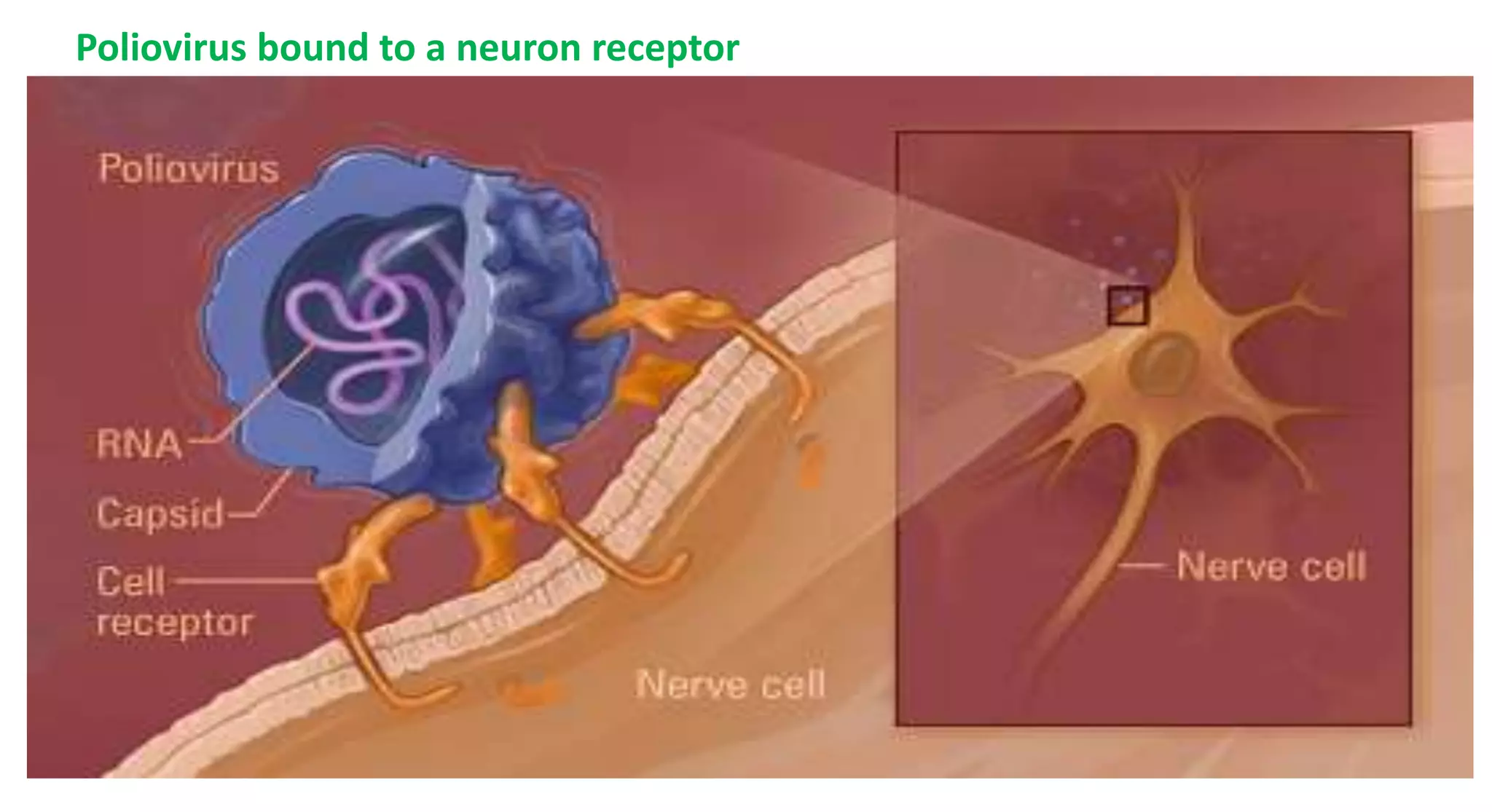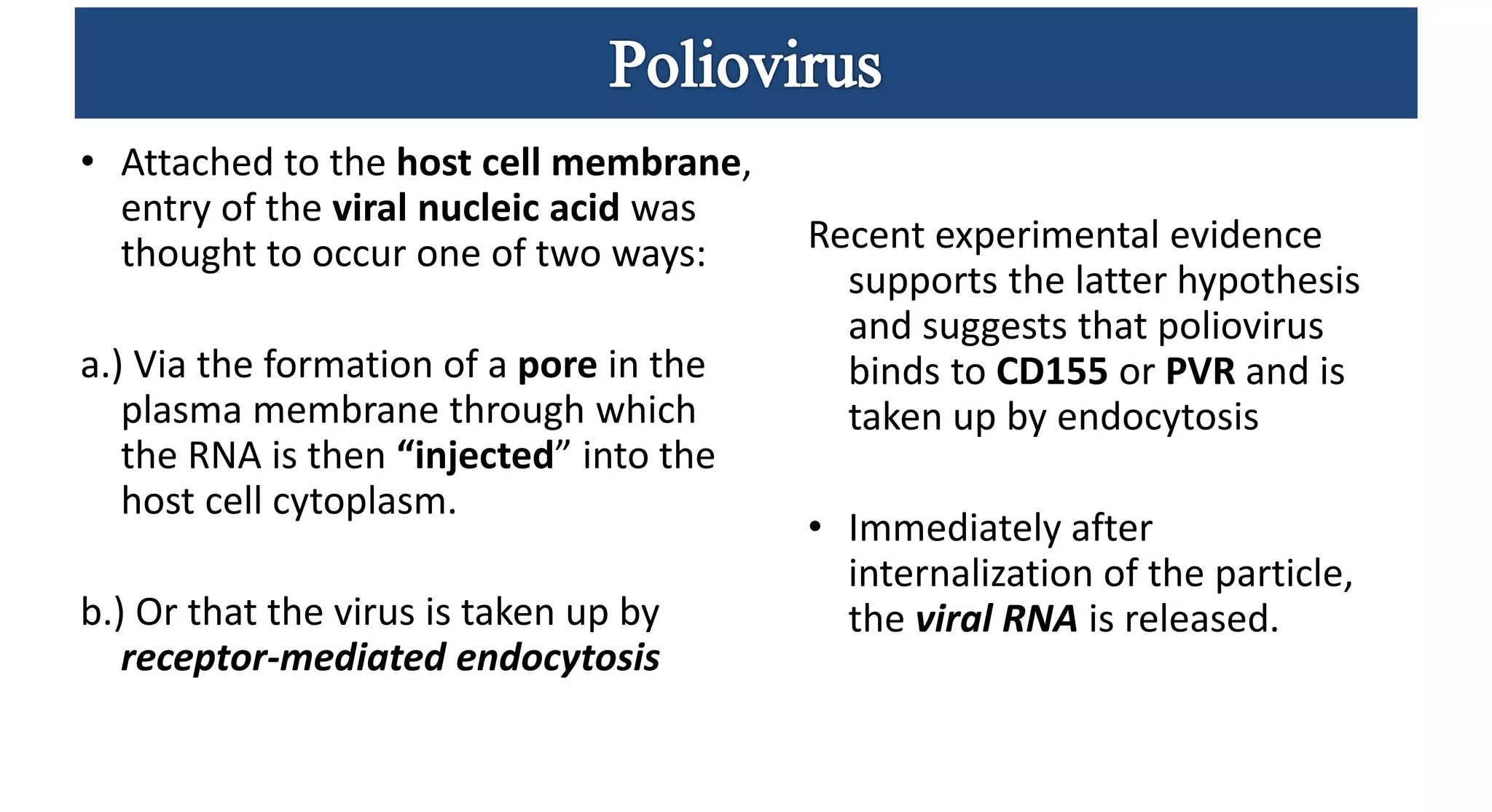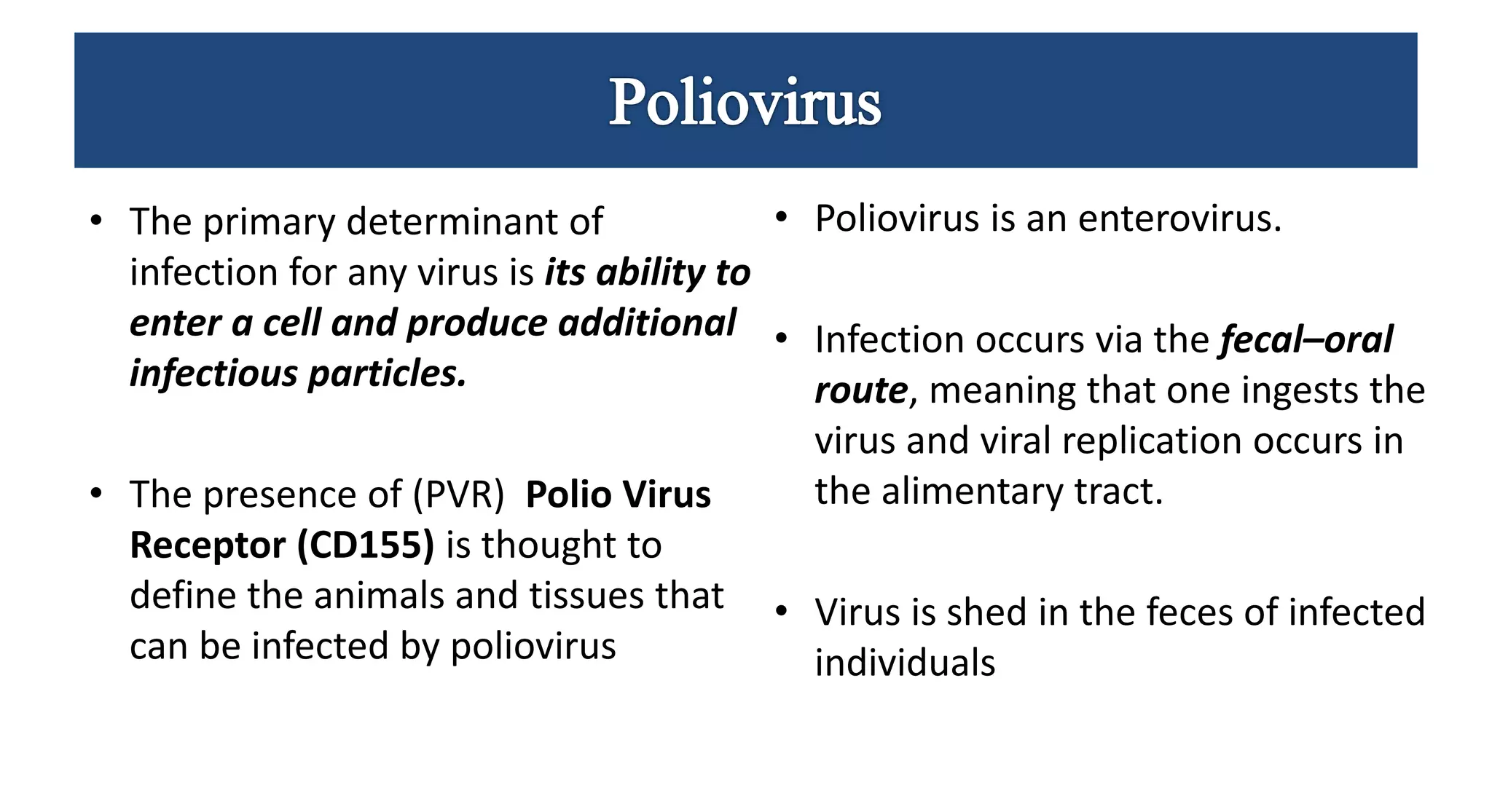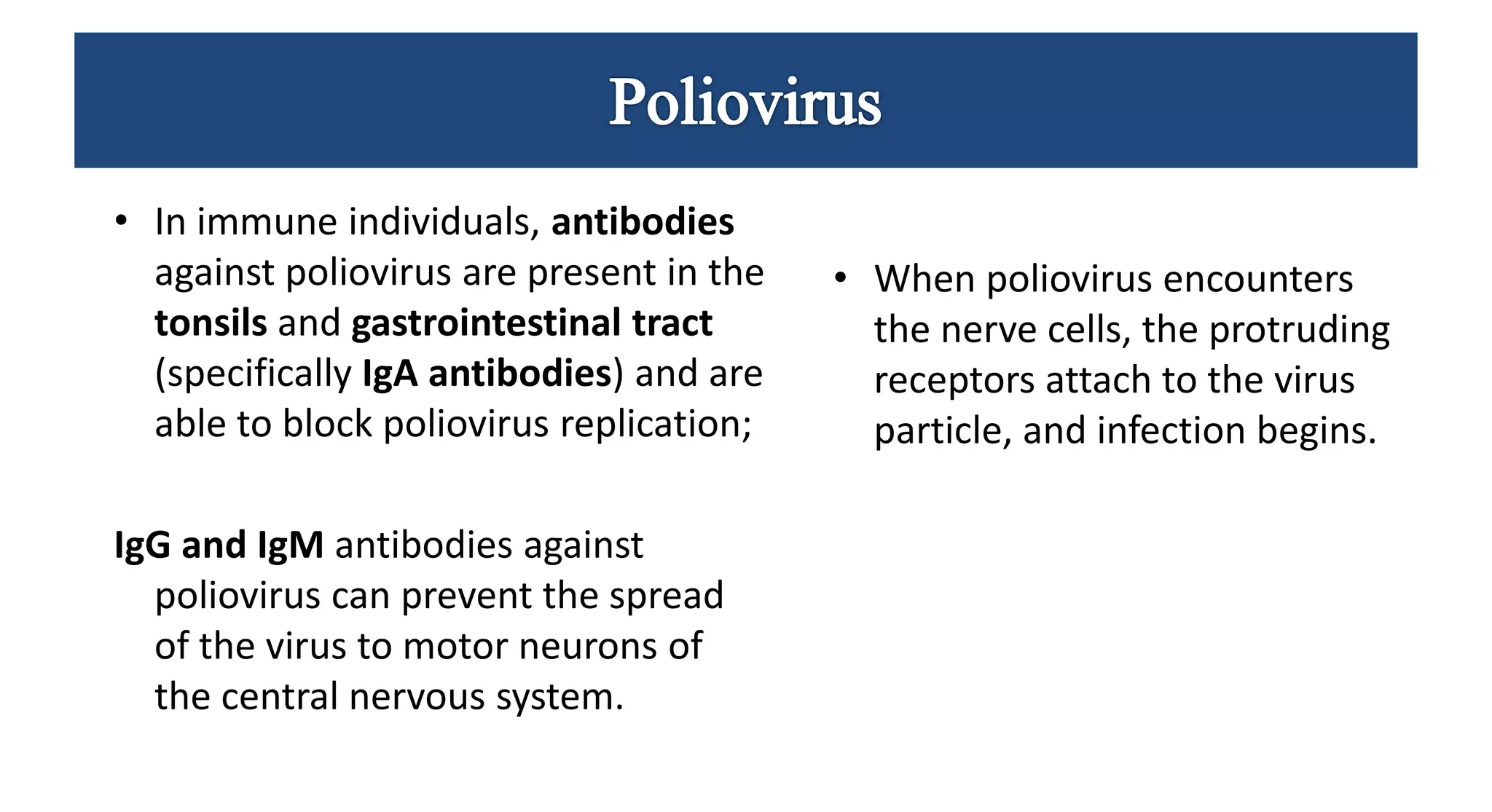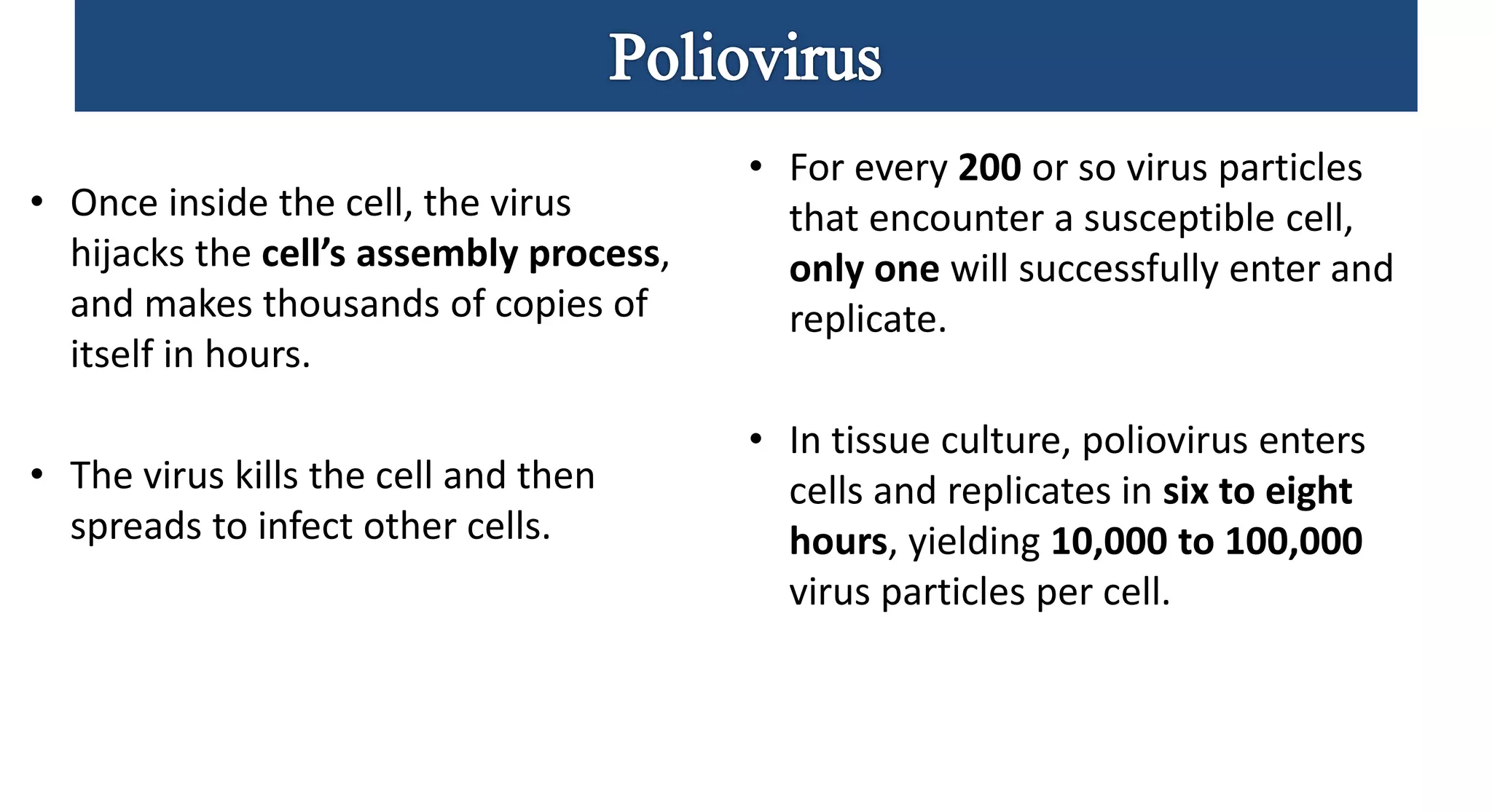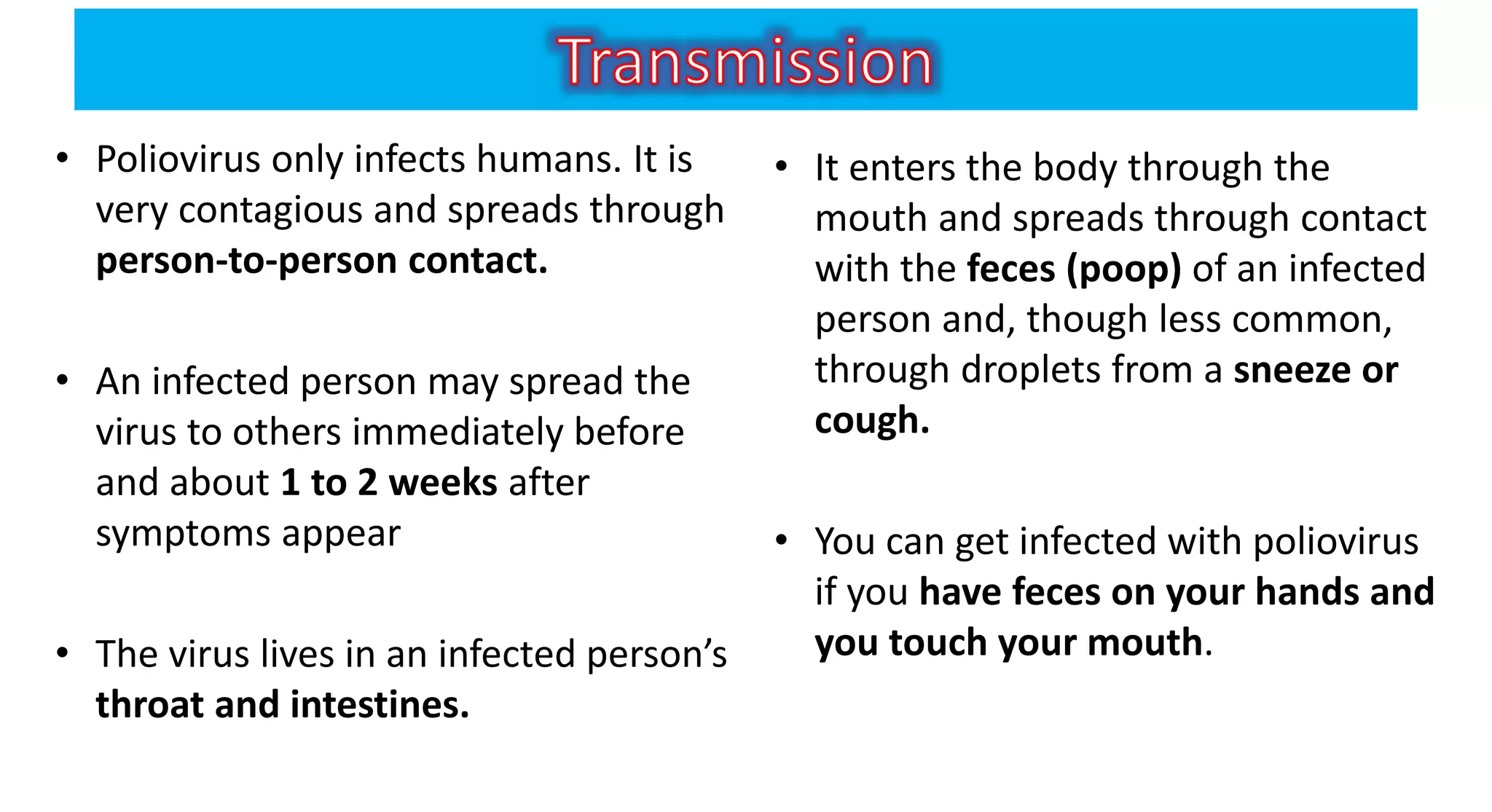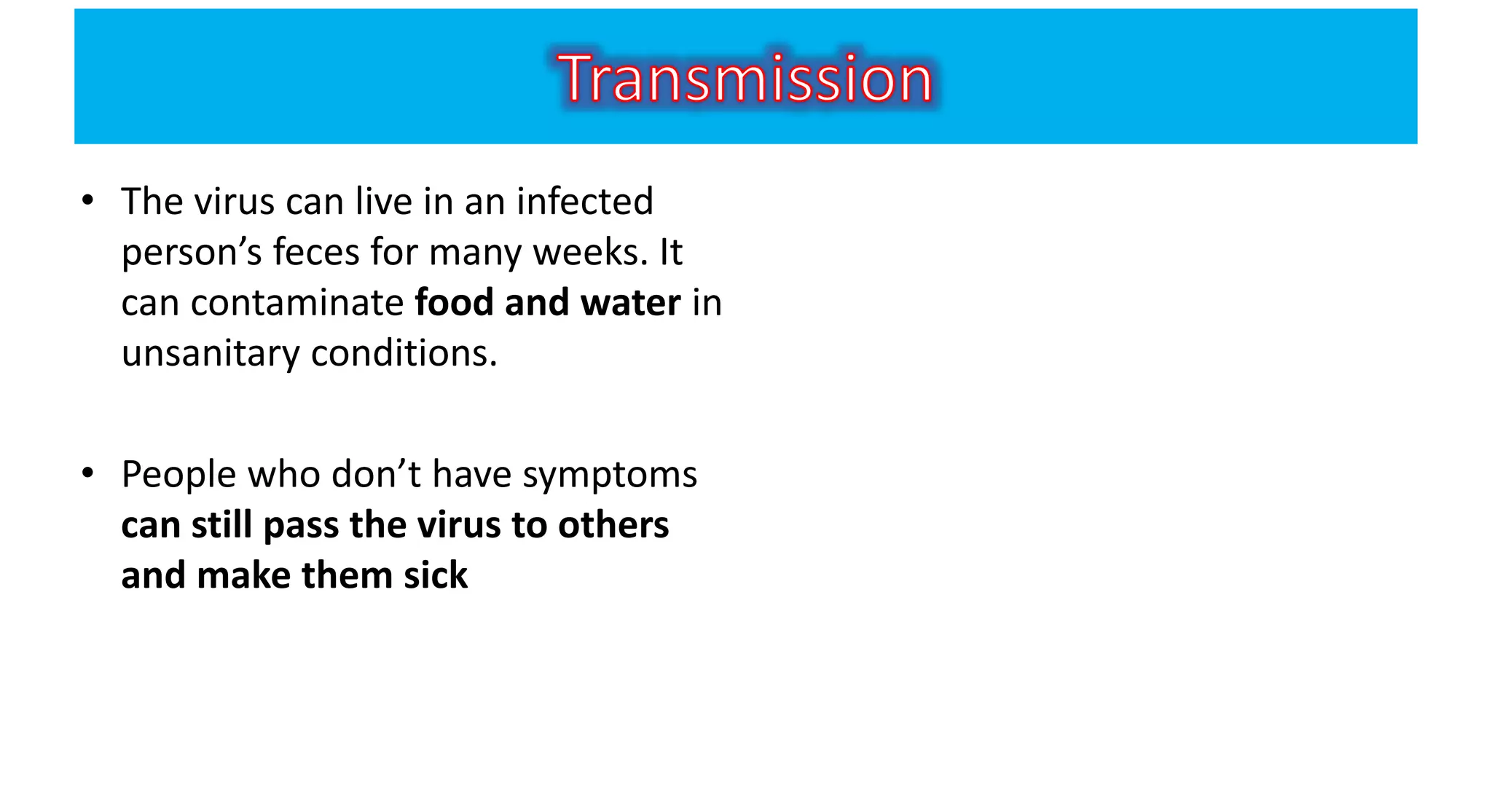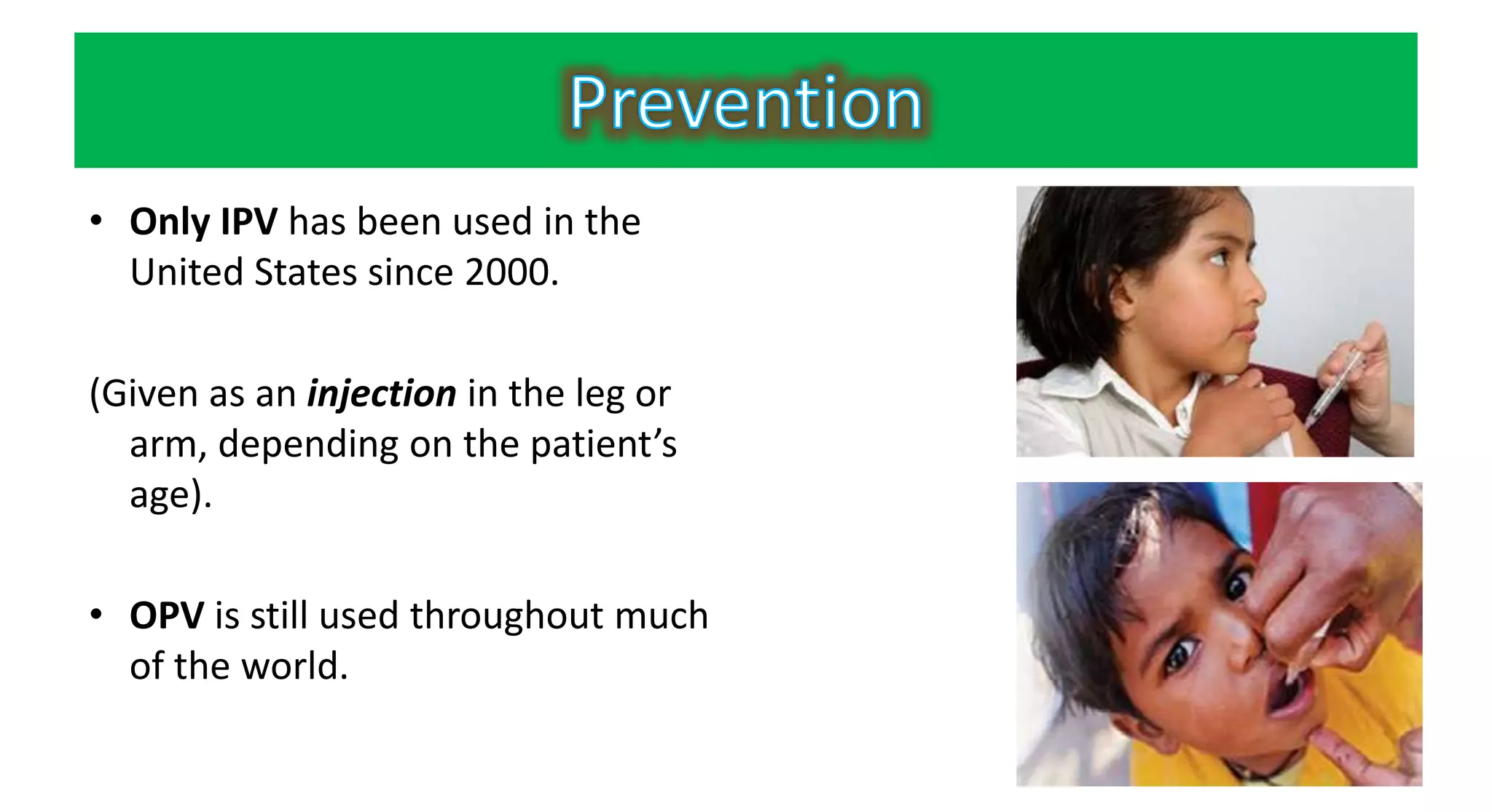Poliovirus is an enterovirus that causes the disease poliomyelitis. It has a positive-sense RNA genome and protein capsid. Poliovirus infects human cells by binding to the poliovirus receptor on the cell surface and is then taken up by endocytosis. The virus can invade the brain and spinal cord, causing paralysis. While most poliovirus infections cause no symptoms, it can also cause flu-like symptoms or meningitis. There are currently two vaccines that can prevent polio.
